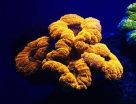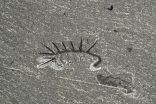Patient outcomes could improve by preparing nursing homes for health information exchange
2015-06-24
(Press-News.org) COLUMBIA, Mo. - When older adults transfer between nursing homes and hospitals, inefficient and unclear communication between the organizations can hinder patient care. Now, a team of MU researchers is working to improve patients' health outcomes by increasing efficient, secure communication between nursing homes and hospitals using an electronic communication system called a health information exchange (HIE).
"The exchange of accurate, complete and timely information between hospitals and nursing homes can be complicated when older adults transfer from one place to another," said Greg Alexander, associate professor in the MU Sinclair School of Nursing and lead researcher of this study. "Ultimately, we want to facilitate a way for staff members to communicate safely and securely about patients' health. We want to prepare nursing homes to communicate externally as well as internally so that care transitions smoothly and patients have better health outcomes."
Alexander and his colleagues assessed the HIE readiness of 16 nursing homes, which involved evaluating the wireless Internet capabilities of the facilities and other existing infrastructure, such as computers, scanners and copiers. With funding from the U.S. Centers for Medicare and Medicaid Services, the researchers helped the facilities purchase the infrastructure they lacked so they would be ready to implement the technology. The researchers then conducted 32 hours of clinical observation, 68 site visits and 230 interviews to study how staff integrated the technology and HIE into their workflow.
The researchers found that all the nursing homes used technology to support patient care, whether through tracking dietary needs and medications or to complete other administrative activities; however, most of the technology was used to communicate patients' information within the nursing home rather than to communicate with external units, such as hospitals or off-site pharmacies. Many nursing homes did use technology to complete tasks, such as keeping track of patients' medications or scheduling appointments, but these systems often were separate. The researchers concluded that many nursing homes needed additional technological and human resources to build and implement an effective HIE network.
"Our goal was to develop a more integrated system by providing an information exchange that could be used by all stakeholders involved in patient care," Alexander said. "We want to build a network through identifying key players and their needs."
Alexander and his colleagues identified areas most integral to patient care and how technology can facilitate those tasks. Using diagrams, the researchers developed visual representations of the communication flow and how technology could streamline and integrate existing processes.
In the next phase of the project, the researchers will evaluate whether HIE implementation improves communication about resident care and how clinicians and other staff feel about integrating the HIE into their workflow, Alexander said. More specifically, the researchers hope to provide a mechanism for nursing homes and hospitals to share patient information and medical documents securely through the health information exchange, Alexander said.
The study, "Preparing Nursing Homes for the Future of Health Information Exchange," was published in Applied Clinical Informatics. Study co-authors include MU researchers Marilyn Rantz, Colleen Galambos, Amy Vogelsmeier, Marcia Flesner and Lori Popejoy.
Alexander is the co-principal investigator on a $14.8 million grant from the U.S. Department of Health and Human Services Centers for Medicare and Medicaid Services aimed at reducing avoidable re-hospitalizations among nursing home residents. One goal of the project is to enhance staff communication through technology and better information exchange. Insights gained from this project could provide a nationwide model for senior care and significantly reduce national health care spending.
INFORMATION:
Research reported in this news release was supported by the U.S. Department of Health and Human Services Centers for Medicare and Medicaid Services under award number 1E1CMS331080. The content is solely the responsibility of the authors and does not necessarily represent the official views of the Centers for Medicare and Medicaid Services.
ELSE PRESS RELEASES FROM THIS DATE:
2015-06-24
Putnam Valley, N.Y. (June 24, 2015) - Cell transplantation researchers have successfully used bone marrow-derived mesenchymal stromal cells (MSCs) to treat a variety of diseases and conditions. Now, using injections of MSCs, a research team in Brazil has successfully treated laboratory rats modeled with severe burns. They found that the MSCs accelerated healing, enhanced local blood supply, affected the immune system in a positive way, secreted beneficial growth factors with anti-inflammatory properties, and ultimately provided higher survival rates than in control animals ...
2015-06-24
Urinary tract and sexually transmitted infections in women are misdiagnosed by emergency departments nearly half the time, according to a paper in the Journal of Clinical Microbiology, a publication of the American Society for Microbiology. These misdiagnoses result in overuse of antibiotics, and increased antibiotic resistance, according to Michelle Hecker, MD, an assistant professor in the Department of Medicine, Division of Infectious Diseases, MetroHealth Medical Center, Case Western Reserve University, Cleveland, and her collaborators.
"Less than half the women ...
2015-06-24
Astronomers using NASA's Hubble Space Telescope have discovered an immense cloud of hydrogen dubbed "The Behemoth" bleeding from a planet orbiting a nearby star. The enormous, comet-like feature is about 50 times the size of the parent star. The hydrogen is evaporating from a warm, Neptune-sized planet, due to extreme radiation from the star.
This phenomenon has never been seen around an exoplanet so small. It may offer clues to how other planets with hydrogen-enveloped atmospheres could have their outer layers evaporated by their parent star, leaving behind solid, rocky ...
2015-06-24
Cystic fibrosis is more deadly for Hispanic than non-Hispanic patients, a disparity that is not explained by differences in their access to health care, according to a new study from the Stanford University School of Medicine.
The study, published online June 18 in Chest, tracked more than 1,700 California residents with cystic fibrosis. Between 1991 and 2010, Hispanic CF patients were almost three times as likely to die as non-Hispanic CF patients, the study found. The gap in survival existed in spite of the fact that both groups visited CF specialty clinics equally ...
2015-06-24
Glowing corals that display a surprising array of colours have been discovered in the deep water reefs of the Red Sea by scientists from the University of Southampton, UK, Tel Aviv University and the Interuniversity Institute for Marine Sciences (IUI), Israel, together with an international team of researchers.
The researchers, whose findings have been published online today in research journal PLOS ONE, hope that some of the coral pigments could be developed into new imaging tools for medical applications.
The team studied corals at depths of more than 50 metres and ...
2015-06-24
Vitamin B12 tweaks how genes behave in the facial bacteria of some people who normally enjoy clear skin. The activity changes of the facial bacteria promote inflammation and lead to pimples.
By shedding light on one mechanism behind B12's role in acne, the UCLA finding may identify drug targets that lead to new treatments for acne.
Huiying Li, an assistant professor of molecular and medical pharmacology at the David Geffen School of Medicine at UCLA, and Dr. Noah Craft, a dermatologist at LA BioMed at Harbor-UCLA Medical Center, are available for interviews.
Science ...
2015-06-24
On the hunt for better cancer screening tests, Johns Hopkins scientists led a proof of principle study that successfully identified tumor DNA shed into the blood and saliva of 93 patients with head and neck cancer. A report on the findings is published in the June 24 issue of Science Translational Medicine.
"We have shown that tumor DNA in the blood or saliva can successfully be measured for these cancers," says Nishant Agrawal, M.D., associate professor of otolaryngology -- head and neck surgery -- and of oncology at the Johns Hopkins University School of Medicine. "In ...
2015-06-24
Various diagnostic imaging techniques are currently used for clinical imaging/disease diagnosis. The accuracy of diagnosis is mainly based on the type of energy used (such as X-ray, sound waves, photons and positrons) to derive the visual information, as well as the degree of spatial resolution (mesoscopic or microscopic) and the level of information that can be obtained (physiological, anatomical or molecular). Based on potential health hazards imposed by type of energy used, clinical imaging modalities can be broadly categorized as ionizing and non-ionizing modalities. ...
2015-06-24
From AGU's blogs: Landslide-induced sediment production after the Sabah earthquake in Malaysia
The Mw=6.0 5 June 2015 Sabah earthquake in Malaysia, which killed 18 people in rockfalls on Mount Kinabalu, generated landslides that have released large volumes of sediment. The heavy tropical rainfall in Sabah means that this sediment is now starting to enter the river systems in the form of mudflows and sediment-rich flash floods. Dave Petley explores the aftermath of the Sabah earthquake in a new post on The Landslide Blog.
From Eos.org: Improving predictions of Arctic ...
2015-06-24
A new study of an otherworldly creature from half a billion years ago - a worm-like animal with legs, spikes and a head difficult to distinguish from its tail - has definitively identified its head for the first time, and revealed a previously unknown ring of teeth and a pair of simple eyes. The results, published today in the journal Nature, have helped scientists reconstruct what the common ancestor of everything from tiny roundworms to huge lobsters might have looked like.
Researchers from the University of Cambridge, the Royal Ontario Museum and the University of ...
LAST 30 PRESS RELEASES:
[Press-News.org] Patient outcomes could improve by preparing nursing homes for health information exchange


